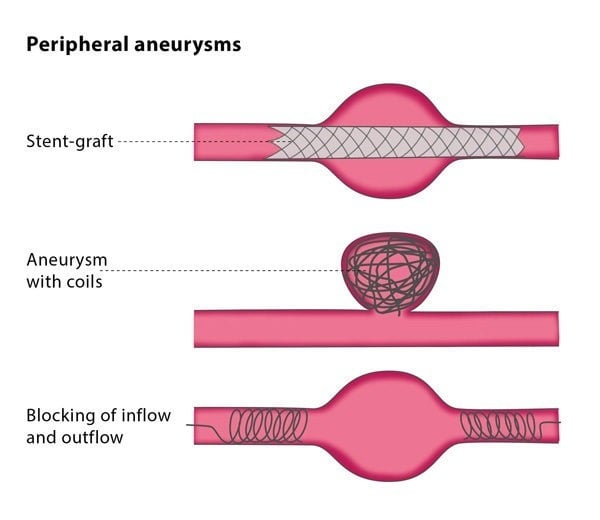What is an aneurysm?
An aneurysm is a localised bulge in an artery caused by weakening which may be a result of atherosclerosis, infection, or injury of the arterial wall. A peripheral aneurysm is an aneurysm which is not located in the aorta. They more often occur in the popliteal artery at the level of the kneein your leg, though may also occur in other areas.
How does the procedure work?
The interventional radiologist numbs the skin on the groin or on the wrist and places a small plastic tube through the skin into an artery. Then theyuse X-Ray image guidance to move the devices to the aneurysm. However, you may need surgery to reach the required artery. There are a few options for treatment – the treatment you will undergo depends on your clinical condition, the location, and the shape of the aneurysm.
One possible option for endovascular treatment of peripheral aneurysms is to use a synthetic tube called a stent-graft across the aneurysm to allow blood to pass through. Alternatively, the inside space of the aneurysm can be filled with embolic material (such as tiny soft metal coils or special glue) which prevents blood flow to the aneurysm. The other possible option is to block blood flow to the vessel.

